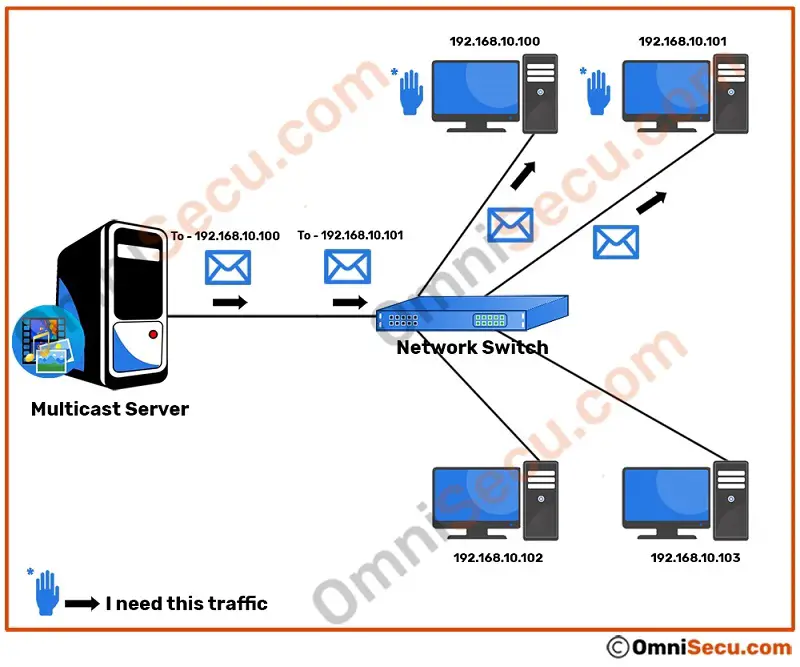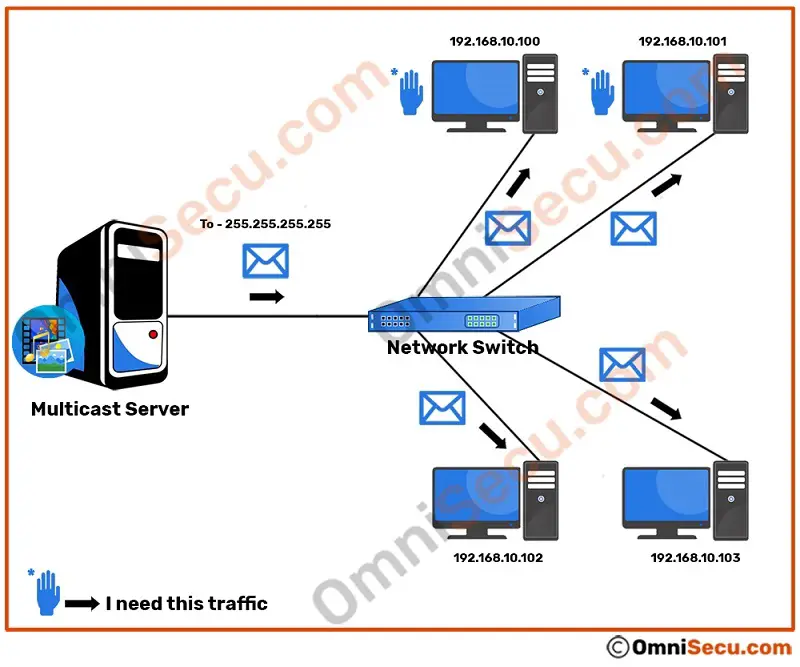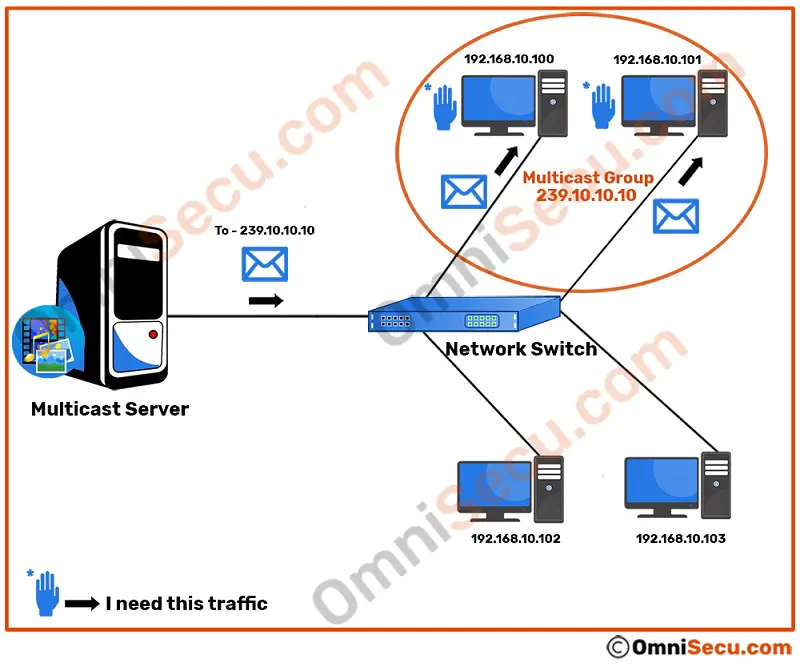Comparison of multicast with unicast and broadcast
In this lesson we will compare multicast with unicast and broadcast. Let us find why/how multicast is better than unicast and broadcast for high bandwidth consuming streaming type of network communication requirements. Examples; Online TVs, Video conferencing, Virtual classroom applications, Stock exchange applications, Large scale Operating System deployment using software images etc. Please note that multicast is not an alternative for unicast. But multicast sent to all computers is broadcast.
Before continuing further, I suggest you to visit and learn following lessons.
- Unicast, Multicast and Broadcast
- Broadcast domain
- Datalink layer of TCP/IP model
- Ethernet Frame Format
- MAC addresses
- Broadcast MAC Address - ff:ff:ff:ff:ff:ff
- IPv4 multicast MAC Addresses
- Network layer of TCP/IP model
- IPv4 Protocol, IPv4 header and fields of IPv4 header
- IPv4 addresses
- Class D multicast IP addresses
- Multicast IPv4 address to MAC address mapping
- What is limited broadcast in IPv4 and how limited broadcast works
- What is directed broadcast in IPv4 and how directed broadcast works
- TCP/IP Encapsulation and Decapsulation
- Transport layer of TCP/IP model
- What is multicast
- What is multicast group
- Advantages and disadvantages of multicast
- How IPv4 multicast works on LAN
Multicast type of network communication allows a server to send single copies of data packet as streams and later distribute those packets only to computers interested and request that traffic. The computers those are not interested and not requested that traffic will not receive a copy. The functionality of multicast can be thought as that lies between unicast and broadcast. As we already know, unicast is "send one receive one" type of network communication and broadcast is "send once receive all" type of network communication. In multicast, only one data packet is sent and that data packet is replicated between computers those are interested in that data packet. Multicast has many advantages over unicast and broadcast for high bandwidth consuming streaming type of network applications like Online TVs, Video conferencing, Virtual classroom applications, Stock exchange applications, Operating System deployment using images etc.
Multicast provides a better way of network communication for a streaming server to send data to multiple computers interested in that stream. Sending large size data as unicast and broadcast is not an efficient type of communication in big networks. For example, consider a situation in a network where there are 200 computers. 30 computers out of 200 computers are interested in a large size video from a video server. If we are using unicast, the server needs to maintain 30 individual connections. Sending large amount of data individually to many different computers is not an efficiant way of communication. This will cause heavy traffic congestion on network links and also cause heavy CPU load on servers.
Following images shows a comparison of multicast with unicast and broadcast with an example of a multicast video straming server and some clients. Let us compare multicast with unicast and broadcast, with the example of below multicast video streaming server.
Below image shows that the server sends data to only two client computers (out of four) those are interested in that data stream as unicast. In unicast type of network communication, server needs to sent data to those two clients interested in that traffic as two separate individual connections. Sending and maintaining many separate individual connections will cause heavy traffic on network links and cause heavy load on the server.

Below image shows a server sends data to two client computers (out of four) those are interested in that data stream as broadcast. In broadcast type of network communication server sends data to clients only once and those data packets will be replicated by the switch to all computers in that broadcast domain.
Are you able to compare the current situation with previous unicast type of communication ? Now the CPU load on the server is reduced and the traffic on the link connecting the multicast server to the switch is also reduced. The issue with broadcast type of communication is that only two computers are interested in that traffic, but all the links connecting switch to all other computers are now flooded with unwated traffic. The computers those are not interested in that data stream will also receive a copy of broadcast. All the computers in that broadcast domain must pause what they are doing and must spent their resources to process those unwanted packets.

Below image shows a server sends data to two client computers (out of four) those are interested in that data stream as multicast. In multicast type of network communication, server sends data to clients only once and those data packets will be replicated by the switch only to the computers in that network segment those are interested in that traffic. In multicast, the data packets use a special destination IPv4 address, known as a Class D multicast address (in this example; 239.10.10.10). Now the server needs to send packet only once, and computers those are interested in that stream must request to receive that stream. Since the received packets are not broadcast packets, the computers those are not interested in that data packets can filter and discard them at datalink layer, thus saving CPU resources.
Again, can you compare the current situation of multicast with previous unicast and broadcast types of network communication ? Now the load on the server is reduced and the traffic on the link connecting the server to the switch is also reduced. All links connecting the switch to computers those are not interested in that traffic are not flooded with unwanted traffic. Only computers those are interested in that traffic will receive copies of that multicast stream. Other computers those are not interested in that traffic can proceed with what they are doing without any interruption.
